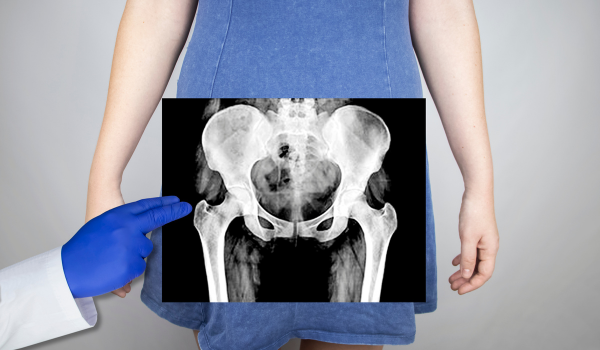.png)
Why Timely Treatment Matters
May-Thurner Syndrome (MTS), also known as iliac vein compression syndrome, may start quietly, often with subtle symptoms or even none at all. However, when left untreated, MTS can progress into severe complications that significantly affect quality of life—and even become life-threatening.
Understanding the dangers of ignoring May-Thurner Syndrome is essential. With early diagnosis and treatment, most complications are avoidable. But without intervention, the risks multiply over time.
Deep Vein Thrombosis (DVT)
One of the most common and dangerous complications of untreated MTS is the development of deep vein thrombosis (DVT). This occurs when a blood clot forms in a deep vein, typically in the left leg due to the compression caused by the right iliac artery.
Symptoms include:
-
Sudden leg swelling
-
Pain or tenderness
-
Warmth or redness of the skin
-
Heaviness or fatigue in the leg
DVT is not just painful—it’s a medical emergency. Without proper care, the clot can break off and travel to the lungs.
Pulmonary Embolism (PE)
When a DVT clot dislodges and travels through the bloodstream to the lungs, it results in a pulmonary embolism (PE). This life-threatening condition restricts oxygen flow and can cause sudden death if not treated immediately.
Warning signs include:
-
Sudden shortness of breath
-
Chest pain that worsens with breathing
-
Rapid heart rate
-
Coughing up blood
-
Lightheadedness or fainting
MTS-related DVTs make PE more likely, especially when clots are large or untreated. Early intervention is crucial to prevent this cascade of events.
Chronic Venous Insufficiency (CVI)
Long-standing vein compression leads to chronic venous insufficiency—a condition where the leg veins can’t properly send blood back to the heart.
Symptoms of CVI may include:
-
Persistent leg swelling
-
Heaviness or aching in the legs
-
Skin thickening or darkening
-
Cramping, especially at night
Over time, CVI causes fluid buildup in the tissues, leading to skin breakdown and more serious issues.
Venous Ulcers
When chronic venous insufficiency is left unmanaged, it can lead to skin breakdown and ulcer formation—particularly around the ankles or lower leg.
Venous ulcers are:
-
Painful and slow to heal
-
Prone to infection
-
Recurring in nature
These wounds greatly reduce mobility and are difficult to treat without addressing the underlying vein issue. Many patients suffer for years before the connection to MTS is recognized.
Post-Thrombotic Syndrome (PTS)
If a blood clot remains untreated or recurs due to MTS, it can damage the vein valves, resulting in post-thrombotic syndrome. PTS causes chronic symptoms in the leg that often persist even after clot removal.
Key symptoms include:
-
Leg pain and heaviness
-
Chronic swelling
-
Skin changes and discoloration
-
Development of varicose veins
-
Reduced quality of life
Once established, PTS is difficult to reverse and can be a lifelong complication for some.
Collateral Vein Formation
In response to vein compression, the body may try to reroute blood through smaller, superficial veins. This results in the formation of collateral veins.
While initially helpful, these veins can:
-
Become enlarged and visible under the skin
-
Be prone to rupture or clot formation
-
Lead to cosmetic and functional concerns
Without proper treatment, collateral veins only offer partial compensation and are a sign of worsening underlying obstruction.
Bilateral Leg Issues
Though MTS typically affects the left leg, long-standing untreated cases may eventually affect both sides. As blood flow backs up in the pelvis, the pressure can extend to other veins, causing:
-
Swelling in both legs
-
Increased risk of bilateral DVT
-
Worsened venous return throughout the lower extremities
This progression can severely impact daily function and mobility.
Pelvic Congestion Syndrome
In some cases, untreated MTS leads to blood pooling not only in the leg, but also in the pelvic veins. This is particularly common in women and results in a condition called pelvic congestion syndrome (PCS).
Symptoms include:
-
Chronic pelvic pain or pressure
-
Pain during or after intercourse
-
Worsening pain when standing or walking
-
Visible varicose veins on the buttocks or upper thighs
PCS can affect fertility and emotional well-being if left undiagnosed and untreated.
Recurrent DVT
Ignoring MTS increases the likelihood of recurrent DVTs, which pose new risks each time they occur. Each event may cause more damage to the vein wall, heightening the chances of:
-
Larger clots
-
More severe PTS
-
A permanent need for anticoagulant medications
Each recurrence becomes harder to treat, making prevention and long-term management more difficult.
Mobility Issues
Chronic leg pain, swelling, and fatigue can make walking and standing uncomfortable or impossible. Over time, untreated MTS may lead to:
-
Reduced physical activity
-
Muscle deconditioning
-
Increased risk of falls
-
Mental health decline due to inactivity
Mobility challenges can cause a downward spiral that affects overall health and independence.
Mental Health Impact
Chronic illness and pain take a toll on mental health. People with untreated MTS often suffer from:
-
Anxiety about future blood clots
-
Depression due to reduced mobility
-
Frustration from misdiagnosis or delayed treatment
-
Social withdrawal due to visible leg changes or fatigue
Emotional strain is common, and mental health support should be part of holistic care.
Misdiagnosis and Delayed Treatment
Because MTS shares symptoms with other conditions like arthritis, lymphedema, or nerve disorders, it is often misdiagnosed. Delayed treatment results in:
-
Worsening vein damage
-
Progression to DVT or PE
-
Prolonged pain and disability
Raising awareness among patients and providers can help improve timely detection.
Impact on Pregnancy
For women of childbearing age, untreated MTS can pose serious risks during pregnancy. Increased pressure from the uterus worsens vein compression, heightening the risk of:
-
DVT during pregnancy or postpartum
-
Pregnancy complications due to clotting
-
Need for anticoagulation, which carries its own risks
Early detection before or during pregnancy helps create a safer care plan.
Quality of Life Reduction
Even without major clots, untreated MTS can chip away at daily life. Symptoms may prevent individuals from:
-
Exercising or enjoying physical activities
-
Standing or sitting for long periods
-
Working jobs that require mobility
-
Traveling or flying long distances
These limitations can affect everything from career to leisure, adding to emotional distress.
Increased Healthcare Costs
Delays in diagnosis and care lead to more emergency visits, hospitalizations, and advanced procedures. Costs add up from:
-
Long-term medication
-
Repeated imaging tests
-
Surgical or stent placement
-
Wound care for ulcers
Early intervention is not only medically wise but also cost-effective.
Increased Mortality Risk
In rare but serious cases, untreated MTS leads to fatal complications, primarily from pulmonary embolism. The risk is especially high if:
-
DVT is large or recurrent
-
Anticoagulants are not used
-
Symptoms are ignored
Prompt diagnosis and management save lives by preventing clot-related fatalities.
Missed Treatment Opportunities
When MTS is caught early, patients have a wide range of minimally invasive treatment options—like stenting or catheter-based clot removal. Untreated progression can lead to:
-
Ineligibility for less invasive care
-
Need for major vascular surgery
-
Longer recovery times
Delaying diagnosis often reduces your options and increases risk.
Conclusion
May-Thurner Syndrome may seem harmless at first, especially if symptoms are mild. But left untreated, the condition can spiral into serious complications—some of which can permanently damage your veins, limit your lifestyle, or even become life-threatening.
Recognizing the risks of inaction is key to protecting your health. If you experience persistent left leg swelling, unexplained pain, or have had a DVT, consult a vascular specialist. Timely treatment can restore normal circulation, prevent future complications, and safeguard your long-term well-being.

.png)
.png)
.png)
.png)
.png)
.png)
.png)
.png)



